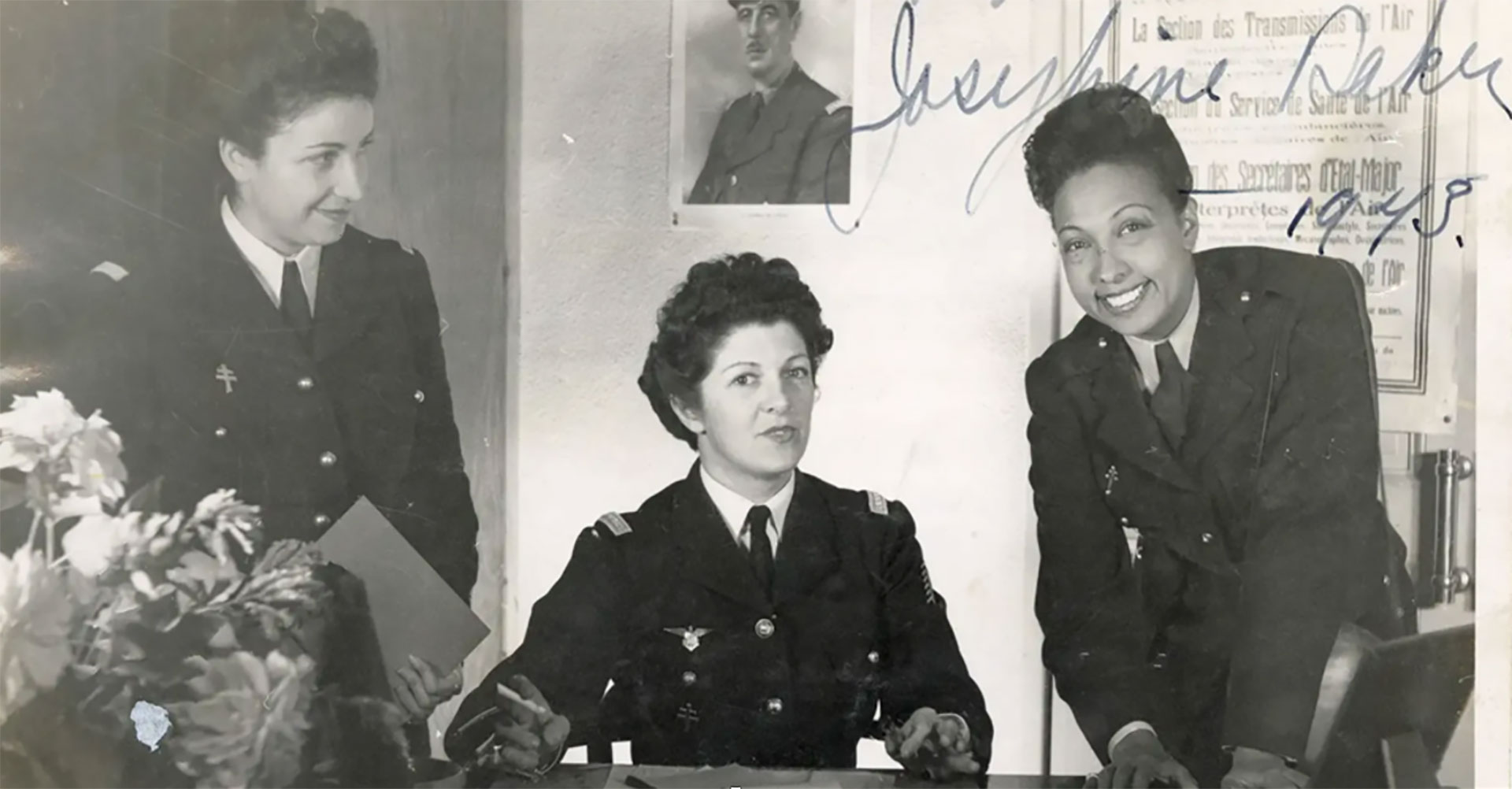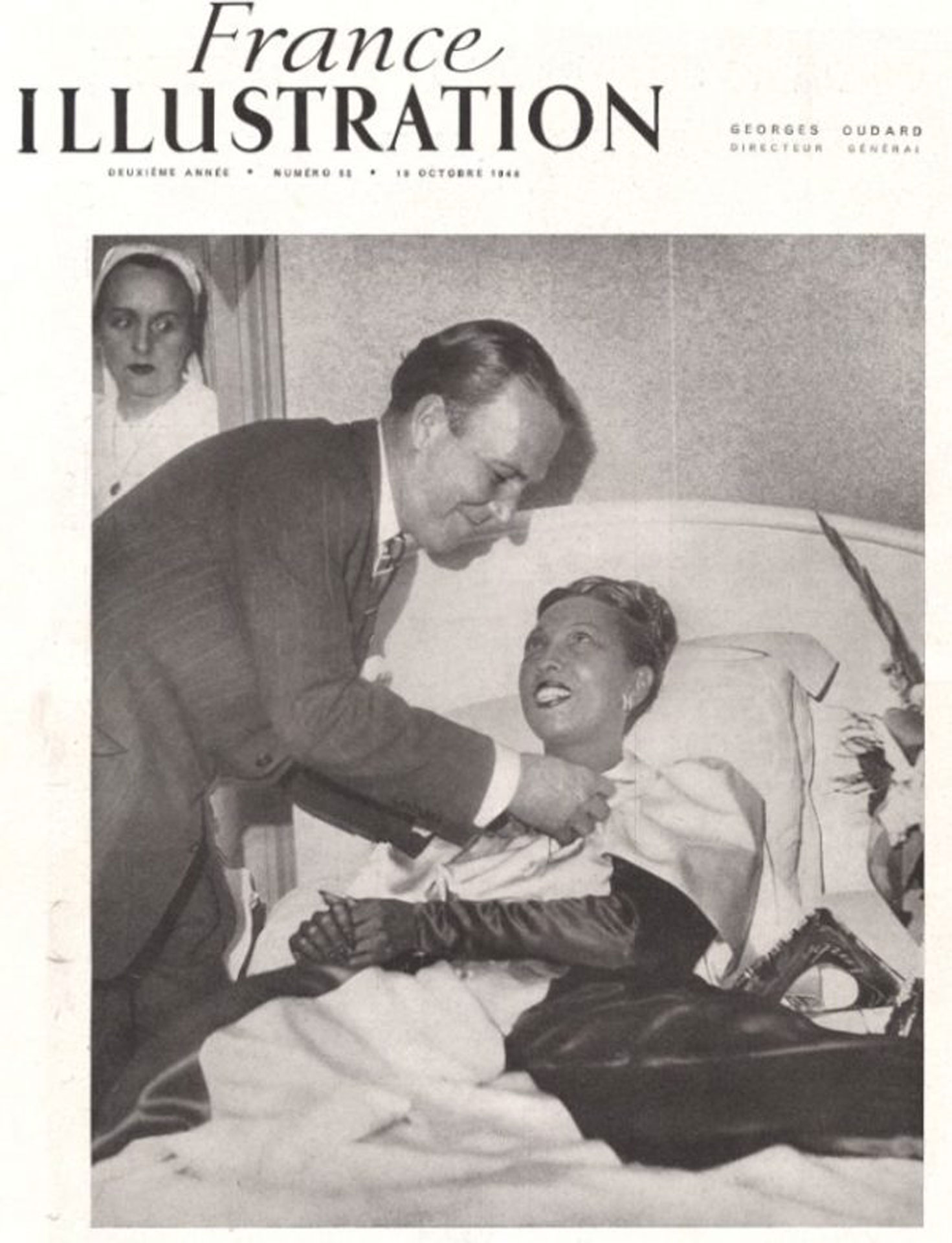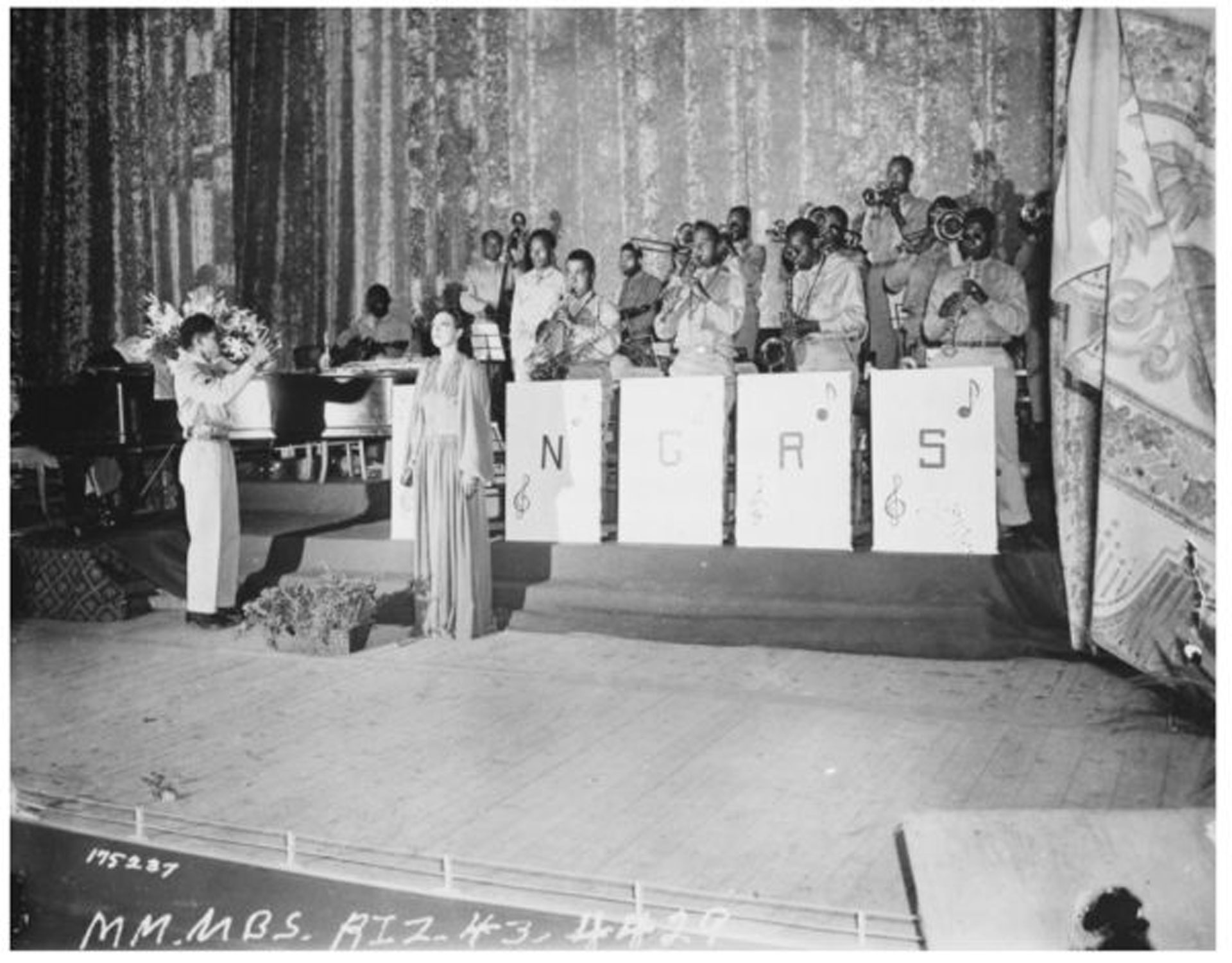Joséphine Baker
Josephine Baker, inducted into the French Panthéon in 2021, represents the early Resistance in France. The originality of her commitment lies in the fact that in 1939, this black American was a well-known star in Paris. As a dancer, she became immediately popular to the public in 1925 with the “Revue Nègre”, a show in which she performed naked and with bananas tied to her belt. An eclectic performer, she also had a successful career in song and film. In 1936, she married a Jewish industrialist, Jean Lion, who enabled her to obtain French nationality and raised her awareness of anti-Semitism: as a member of the LICA (Ligue Internationale Contre l’Antisémitisme, International League Against Racism and Anti-Semitism), she was seen at meetings and, when the war broke out, the artist came to sing on the front line in order to “maintain the good mood of the troops”. Her strong patriotism led to her being approached by Jacques Abtey, an officer in the French intelligence service responsible for recruiting sure personalities to gather information on enemy activity. Josephine Baker accepted without hesitation and became a spy in 1939. Her work consisted of attending receptions and gathering information about German intentions.
When France was occupied in June 1940, she supported General De Gaulle. She moved to the Château des Milandes (Dordogne), close to the demarcation line, which quickly became a place of refuge for Resistance fighters and Jews. From 1941 onwards, Josephine Baker continued her espionage work on the other side of the Mediterranean, in Algiers and Casablanca, and took part in concert tours for French and Anglo-American troops throughout the Maghreb and the Middle East. From November 1942, his image was used in Resistance propaganda. This multifaceted activity was complemented by another skill: aviation. Fascinated by the air, she learnt to fly in 1935 and obtained her licence, which enabled her to join the ranks of the “Forces Aériennes Française Libres” (Free French Air Force) in May 1944 with the rank of second lieutenant. As a member of the Resistance, she landed in Marseille and sang in Belfort on 20 November 1944 for General De Lattre de Tassigny’s troops.
All these feats of arms highlight the intensity of an artist’s activity at a time when other French stars such as Edith Piaf, Arletty, Danielle Darrieux and Suzy Delair had dubious attitudes towards the occupying forces. It was with this spirit of resistance, adorned with her military medals and honours, that this black American turned famous Frenchwoman spoke in Washington in 1963 at the Martin Luther King March, organised to advocate for the economic and civil rights of African Americans. She remained a voice for peace and fraternity until her death in 1975.
Yvan Gastaut




